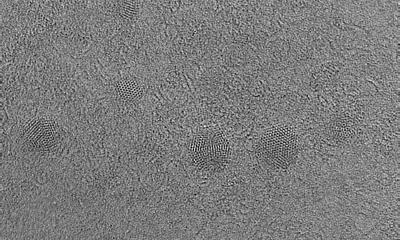Researchers at Rice University have found that nitrogen-doped graphene quantum dots (NGQDs) could be an efficient electrocatalyst for making complex hydrocarbons from carbon dioxide, and used electrocatalysis to demonstrated the conversion of the greenhouse gas into small batches of ethylene and ethanol. This could prove a fascinating and simple way to recycle waste carbon dioxide into valuable fuel.

While the researchers say that the exact mechanism is yet to be fully explored, they found that NGQDs worked nearly as efficiently as copper, which is also being tested as a catalyst to reduce carbon dioxide into liquid fuels and chemicals. In lab tests, NGQDs proved able to reduce carbon dioxide by up to 90% and convert 45% into either ethylene or alcohol, comparable to copper electrocatalysts. NGQDs also have the advantage of keeping their catalytic activity for a long time.